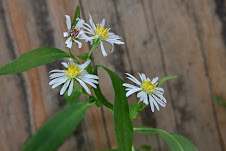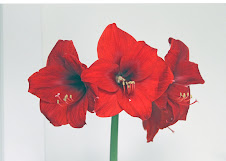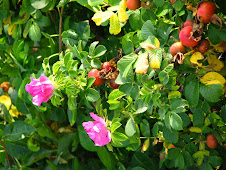Charles Darwin in 1835 developed the Theory of Natural Selection after his voyage to Galapagos on the H.M.S. Beagle. He observed new species which had developed due to environmental forces. Examples of these new species are Darwin’s finches, the Galapagos mockingbirds, the giant tortoises, the flightless cormorants, and the Galapagos penguins and cactus from the genus Opuntia and plants from the genus Scalesia. These new species were developed due to isolation (the Galapagos are 612 miles from South America continent), adaptations, and mutations which created a new species found nowhere else in the world. These new and unique species are called endemic.
Most well-known are the endemic bird and animal species, but there are also many endemic plant species. I will talk about a few of the endemic plants. The most notable are the cactus. There is an endemic Prickly Pear Cactus (Opuntia galapagensis) which has soft short spines. The fruits are eaten by finches, land iguanas and tortoises. Another endemic Prickly Pear Cactus is Opuntia echios var. Gigantea which has long sharp spines and can grow 5 feet tall. Marine iguanas and tortoises eat the fleshy part around the trunk of this cactus.
Growing in the lava fields is the Lava Cactus (Brachycereus Nesioticus). This small endemic cactus grows in clumps.
The Candelabra Cactus (Jasminocereus Thouarsil) is a large endemic cactus which grows to heights of 23 feet.
Mangrove swamps which cover the coastline of many islands provide food and shalter for many animals, birds, and marine species. The salt tolerant trees and shrubs thrive in shallow and muddy saltwater or brackish waters. Their root systems extend above the water and the vertical branches filter the salt out and allow the leaves to receive fresh water. The Black Mangrove (Avicennia germinans) has the highest salt tolerant leaves and grows to height of 65 feet. The Red Mangrove (Rhizophora mangle) is the most common in the Galapagos.
The Button Mangrove or Buttonwood (Conocarpus erecta) is not a true mangrove. The fruit buttons which dry to a brown color are used for decorations.
White Mangrove (Laguncularia racermosa) is a shrub with aerial roots close to the water.
Galapagos cotton (Gossypium darwinii) grows wild through many of the islands. The Muyuyo (Cordia Lutea) is an endemic tree with lovely yellow blooms.
In the Highlands the lowest of the humid zone is named for the daisy tree which grows between 970-1970 feet elevations. This endemic “daisy tree” has evolved into a host of different species in a direct parallel to the Darwin finches. The Scalesia is one of the few trees in the Aster Family and its trunk and branches are covered with moss, lichens and orchids.
This is a small example of the endemic plants which number around 200 plants. Galapagos plants are hardy plants which successfully cross oceans and manage to establish themselves in the often hostile environment of these volcanic islands.
The Galapagos National Park, Naturalist Guides, the Charles Darwin Research Station, and the people of the Galapagos strive to protect the Galapagos Archipelago. Rules of the National Park are to walk only on trails, do not disturb wildlife or remove plant or rock material, do not feed animals , do not smoke on islands or any boat, do not buy souvenirs made from native Galapagos species (except for wood). The Guides are there to educate guests and protect the environment. The locals and tourist ships recycle their plastics, glass, metal, and cardboard.
I traveled in the Galapagos with Mary Crowley. This was her eighteenth trip to the islands! She is the director of Ocean Voyages (http://www.oceanvoyages.com/), which places people on ships throughout the world..



















LP_gardening_2666.jpg)
LP_gardening_2668.jpg)

LP_garden_2819.jpg)

LP_flower_0563.jpg)
LP_flower_0577.jpg)
LP_flower_0545.jpg)
LP_flower_0555.jpg)
LP_flower_0539.jpg)
LP_dog_0470.jpg)
LP_snow_0467.jpg)
LP_dog_0349.jpg)
LP_tree_8153.jpg)
LP_5028.jpg)
LP_flowers_3940.jpg)

LP-grass_0889.jpg)
LP_redfox_1651.jpg)
LP_squirrel_6978.jpg)
LP_flower_6936.jpg)
LP_squirrel_6864.jpg)
LP-deer_4773.jpg)
LP_4521.jpg)
LP_1251.jpg)
LP_4585.jpg)
LP_3784.jpg)
LP_3759.jpg)
LP_3811.jpg)
LP_3816.jpg)
LP_3847.jpg)
LP_0870.jpg)
LP_4183.jpg)
LP_0891.jpg)
LP_3175.jpg)
LP_3577.jpg)

LP_3068.jpg)
LP_3058.jpg)
LP_3562.jpg)
LP_0118.jpg)
LP_3407.jpg)
LP_3150.jpg)
LP_3011+(2).jpg)
LP_3020.jpg)
LP_2830.jpg)
LP_2782.jpg)
LP_2828.jpg)
LP_1746.jpg)
LP_2648.jpg)
LP_2666.jpg)
LP_2668.jpg)
LP_2493.jpg)
LP_2611crop.jpg)


LP_2588.jpg)






LP_2126.jpg)
LP_2122.jpg)





